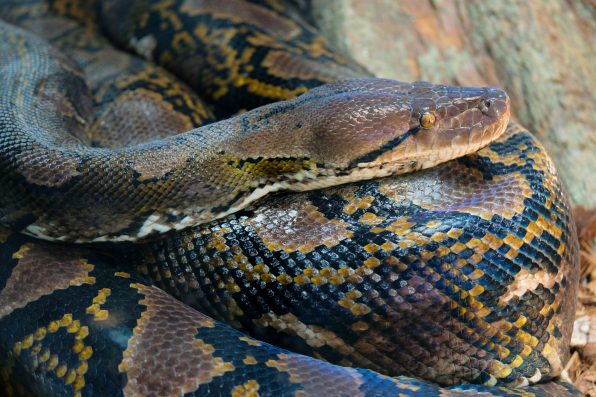New Research Suggests That Giant Python Meat Is Much Less Carbon-Intensive Than Conventional Livestock Meat, Making It A More Sustainable Protein Option

The effects of climate change have reached a point that is now impossible to ignore. Sea levels are rising, temperatures have hit an all-time high, and extreme weather events are becoming the new normal.
Scientists looking for methods of reducing our carbon footprint have stumbled upon a more sustainable alternative to beef, pork, and chicken.
The way that animals are currently being raised and slaughtered for their meat is causing widespread environmental impacts, such as large volumes of greenhouse gas emissions, water pollution, and loss of biodiversity.
That means the meat products from the animal agricultural industry are far from being sustainable sources of food.
In a new study, a team of researchers claims that giant pythons can provide a form of meat that is much less carbon-intensive than conventional livestock options. They found that pythons can reproduce rapidly and are capable of producing 50 to 100 eggs every year, which makes them well-suited for commercial farming.
Other animals farmed for their meat take much longer to reproduce. Studies have shown that a mother cow can produce an average of .8 calves in one year, while a pig can produce 22 to 27 piglets.
Python farming is a common practice in some parts of Asia. Researchers from Macquarie University and the University of Oxford studied around 4,600 Burmese and reticulated pythons at two python farms in Southeast Asia. One was located in the Uttaradit Province of central Thailand, and the other was near Ho Chi Minh City in southern Vietnam.
The pythons were kept in large warehouses designed to allow ventilation and emulate the temperatures of their natural environment. They were fed a diet of locally sourced proteins, such as wild-caught rodents and fishmeal, on a weekly basis.
The researchers found that the pythons grew up to 46 grams per day even when they skipped meals. Around 61 percent of Burmese pythons that fasted for 20 to 127 days lost very little body mass. The snakes also don’t need to consume much water to survive.

“Snakes require minimal water and can even live off the dew that settles on their scales in the morning. They need very little food and will eat rodents and other pests attacking food crops. And they were a delicacy, historically, in many places,” said Dr. Daniel Natusch, the lead author of the study and an Honorary Research Fellow at Macquarie University.
Overall, these benefits give pythons major points for sustainability. The researchers believe that more countries, especially those facing food insecurity, should start practicing commercial python farming. Python meat is high in protein but low in saturated fats, so it’s a good source of high-quality nutrients.
“Climate change, disease, and diminishing natural resources are all ramping up pressure on conventional livestock and plant crops, with dire effects on many people in low-income countries already suffering acute protein deficiency,” Dr. Natusch said.
It is also said that python meat tastes a lot like chicken, so it won’t be too different from what we’re used to. Still, it is unlikely that python farming will be accepted anytime soon in the Western world.
Sign up for Chip Chick’s newsletter and get stories like this delivered to your inbox.












